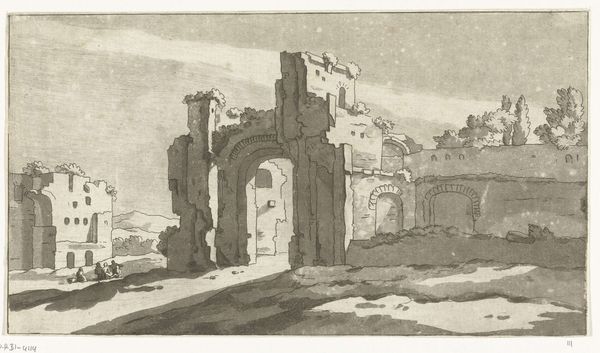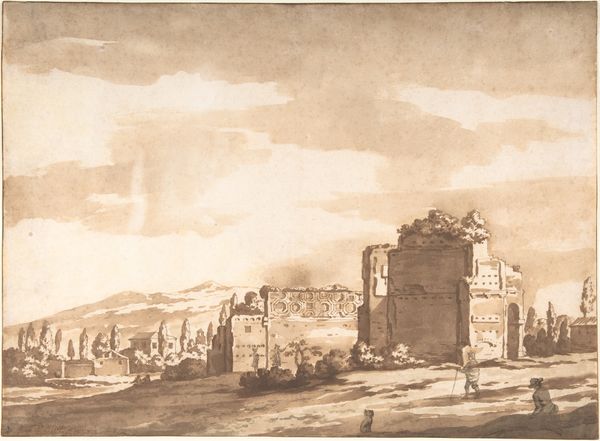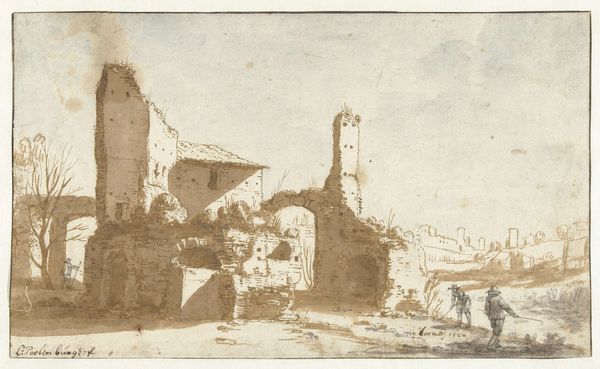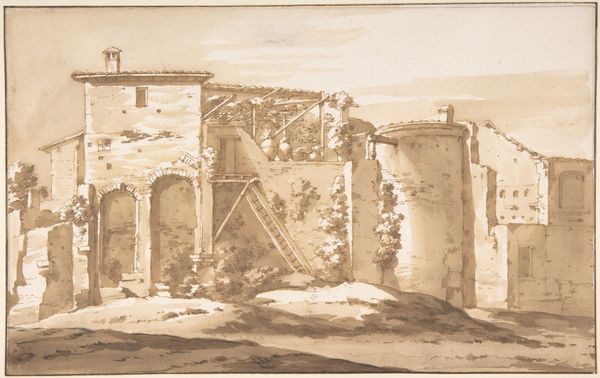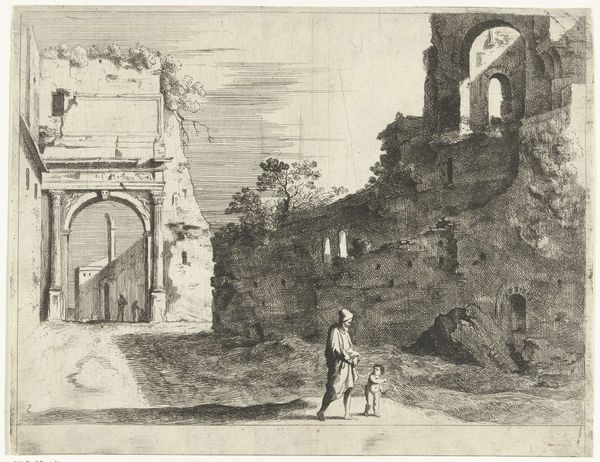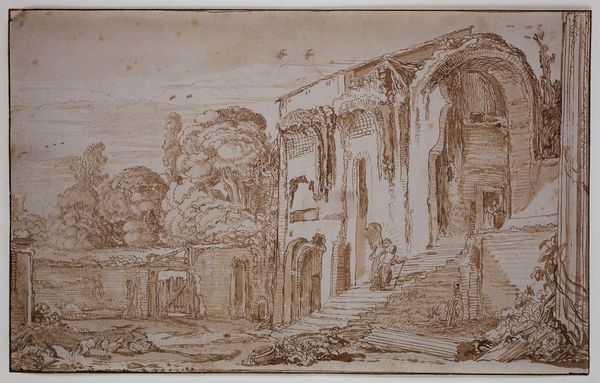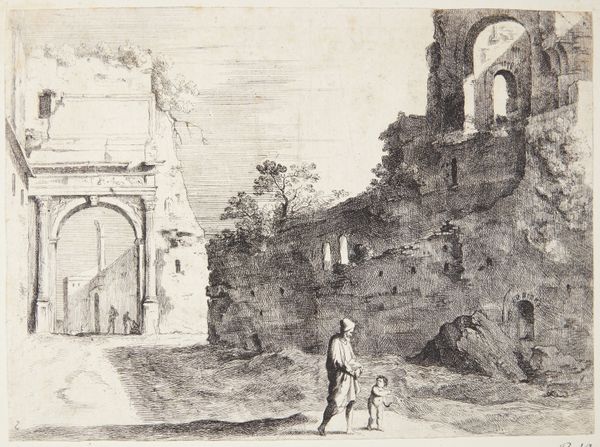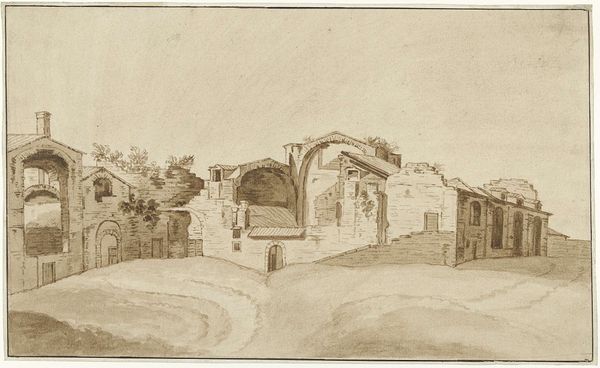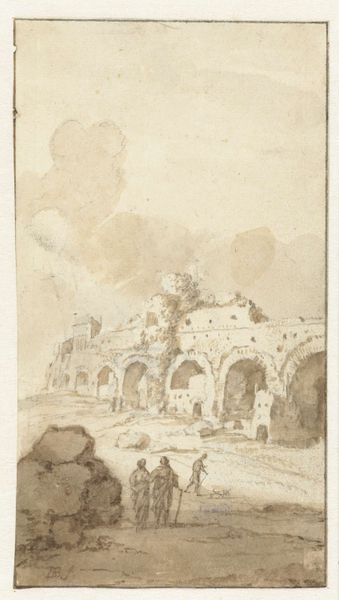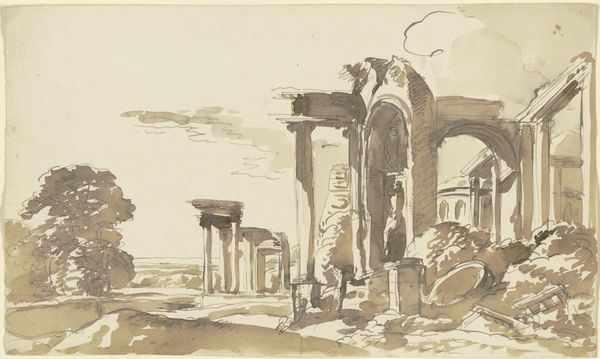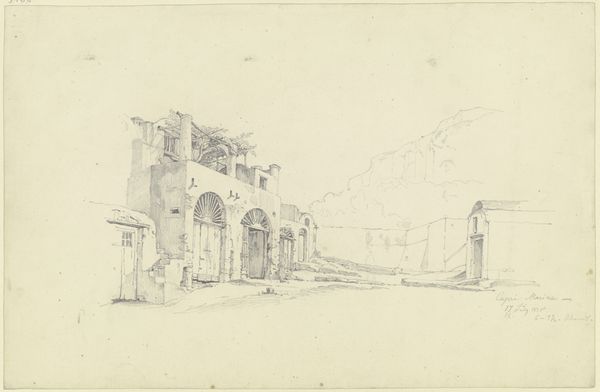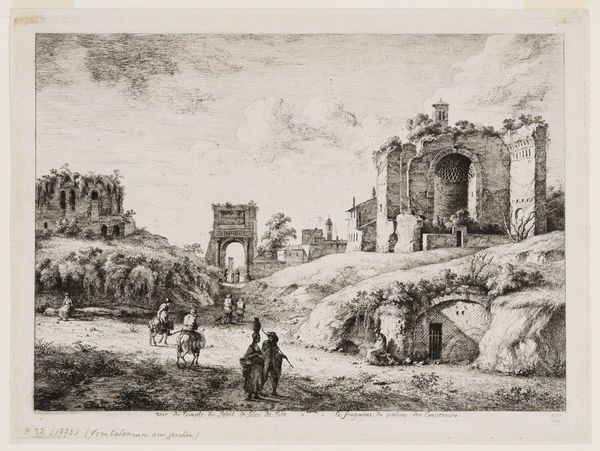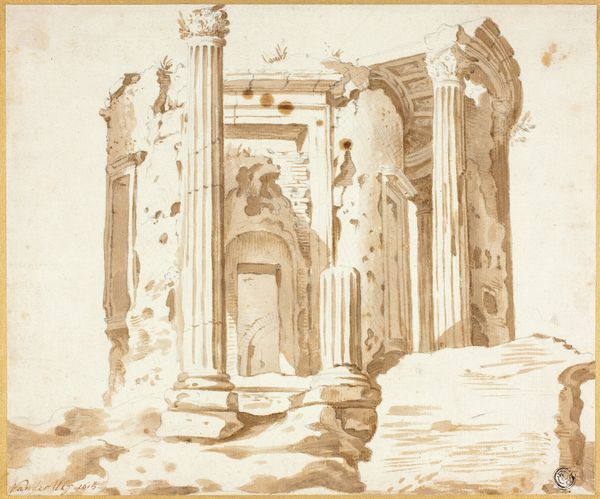
watercolor
#
baroque
#
dutch-golden-age
#
caricature
#
landscape
#
watercolor
#
cityscape
#
watercolour illustration
#
watercolor
Dimensions: height 118 mm, width 192 mm
Copyright: Rijks Museum: Open Domain
Editor: Here we have "Ruïne van een stadspoort", a watercolor cityscape attributed to Jacob van der Ulft and created sometime between 1637 and 1689. The sepia tones lend it an air of faded grandeur. What historical forces might have shaped how such ruins were viewed back then? Curator: That's a perceptive observation. Consider that during the Dutch Golden Age, there was a widespread fascination with classical antiquity, particularly Roman ruins. This interest was intertwined with Dutch national identity, as artists and intellectuals sought to legitimize their emerging republic by associating it with the perceived virtues and grandeur of the Roman Republic. Do you see how van der Ulft romanticizes this ruin, rather than depicting it as a site of decay or loss? Editor: Yes, now that you mention it, despite being a ruin, it's presented as monumental and almost serene. There's a certain beauty in its dilapidation. Curator: Precisely! Think about the role of patronage and the art market at that time. Depictions of ruins were fashionable and appealed to a burgeoning middle class eager to display their knowledge of classical history and culture. These images weren’t just records; they were statements of cultural capital and, potentially, allegories about the transient nature of power and empire. The question then is: Whose power is being alluded to, and what message about its transience might be intended? Editor: So, this isn't just about the beauty of a ruin, but also about positioning the Dutch Republic within a larger historical narrative. Fascinating. Curator: Exactly. It highlights how art serves not only as aesthetic enjoyment but also as a tool for constructing national identity and projecting cultural authority. Editor: I will definitely look at Golden Age landscapes differently from now on!
Comments
No comments
Be the first to comment and join the conversation on the ultimate creative platform.
